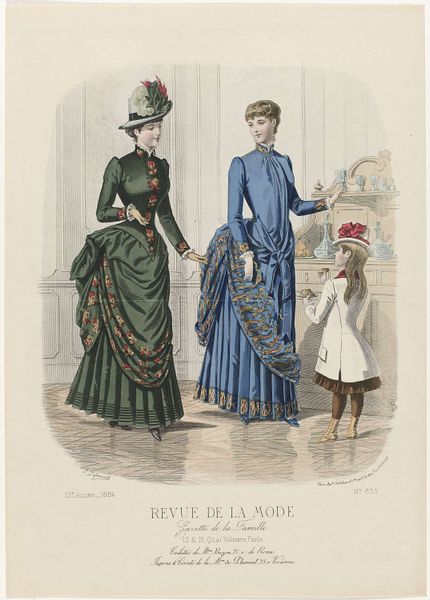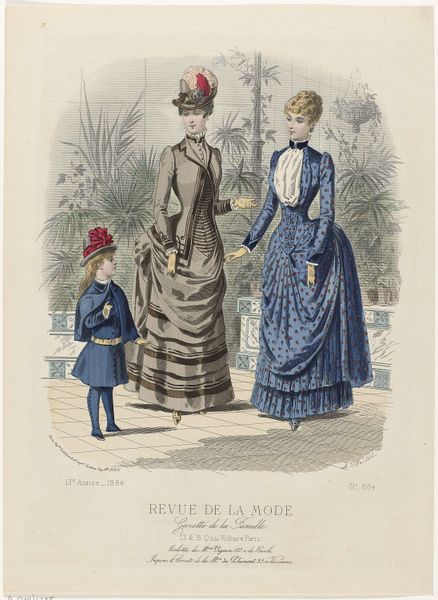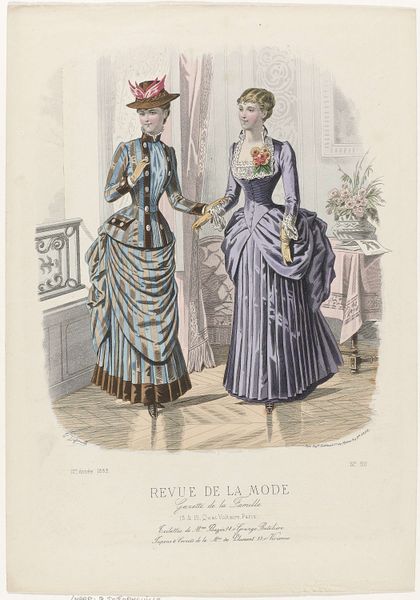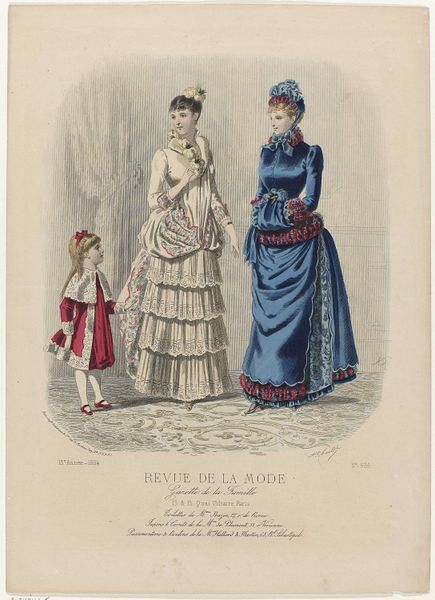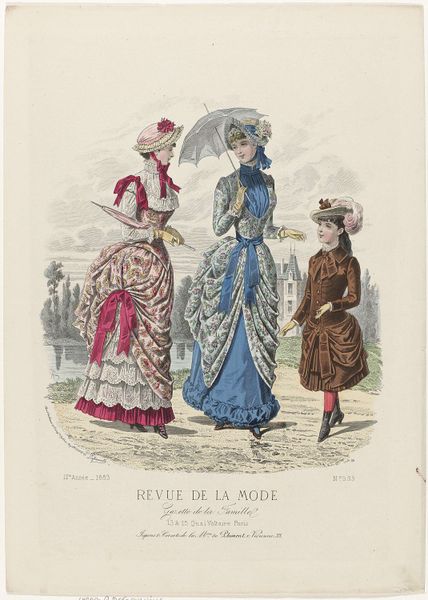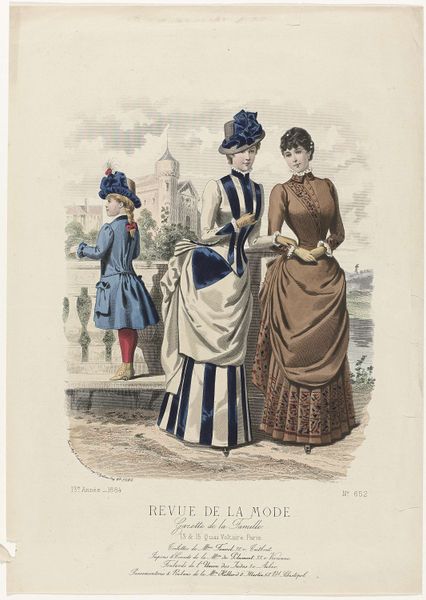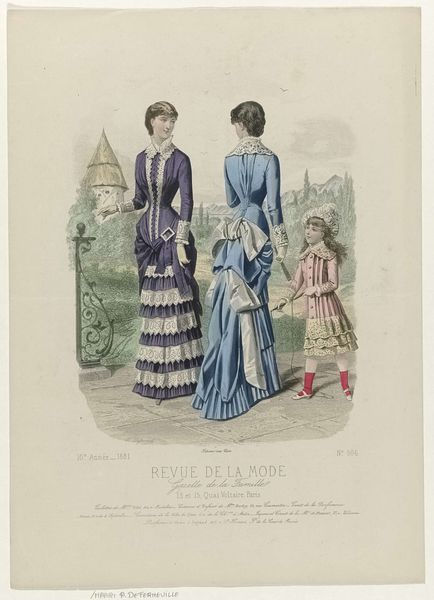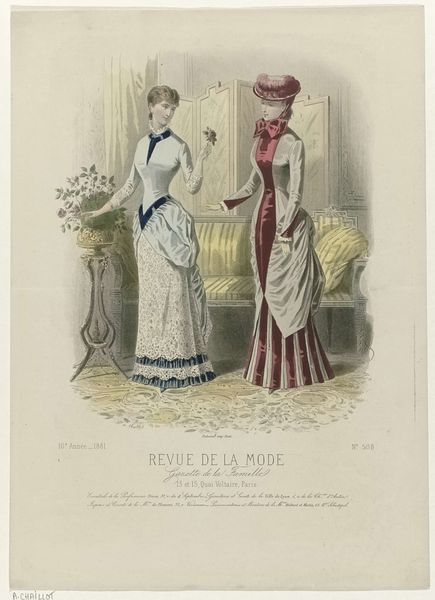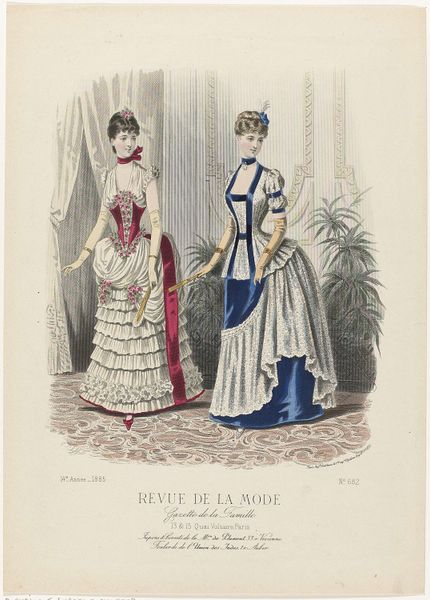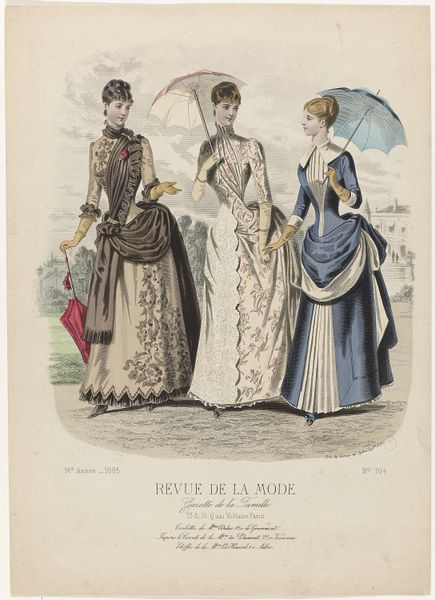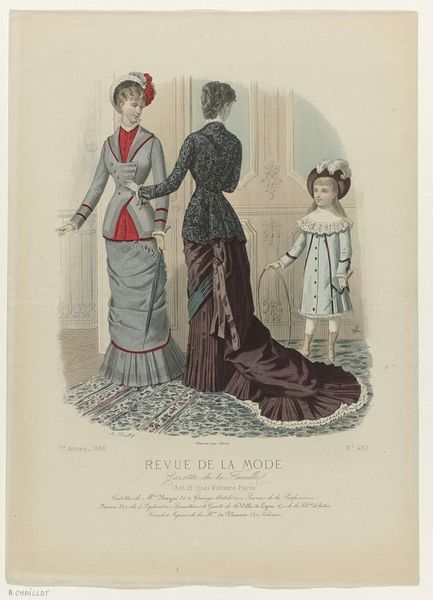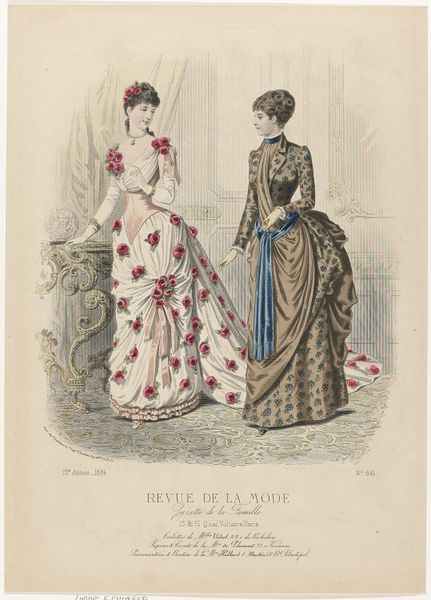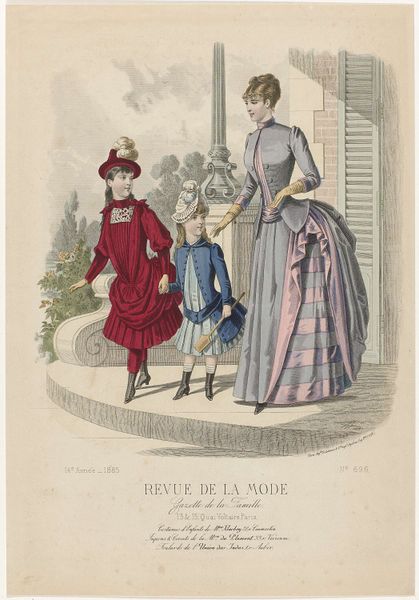
Revue de la Mode, Gazette de la Famille, dimanche 19 août 1883, 12e annee, No. 607: Jupons & Corsets (...) 1883
0:00
0:00
painting, watercolor
#
painting
#
figuration
#
watercolor
#
historical fashion
#
watercolour illustration
#
genre-painting
#
academic-art
#
decorative-art
#
dress
Dimensions: height 375 mm, width 268 mm
Copyright: Rijks Museum: Open Domain
Editor: Here we have an 1883 watercolor illustration by P. Deferneville, titled "Revue de la Mode, Gazette de la Famille… Jupons & Corsets." It features three figures showcasing different garments, each remarkably detailed. It is difficult to say what is more impressive; the artist’s technique, or the clothing itself! What can you tell me about this image? Curator: What strikes me is the intense focus on the *materials* depicted and the processes involved in their creation. Think about the sheer amount of labor poured into these elaborate dresses! The meticulous tailoring, the lace, the precise pleating. And consider, too, the systems of production and consumption supporting this: cotton plantations, textile mills, seamstresses... each contributing to these displays of status and femininity. Editor: So, you’re suggesting we view this less as a fashion plate and more as a snapshot of Victorian industry? Curator: Exactly! It invites us to analyze the socioeconomic structures that enable such elaborate displays. Who *made* these clothes, and under what conditions? The dresses themselves, what meanings do you think they were ascribing based on what could or could not be consumed by the fashionable public? How do they define gender and class roles within the period of time? Editor: I never thought of fashion that way. I was so busy looking at how beautiful the dresses are that I never wondered where the fabrics came from, nor the labor that created it. Curator: And isn't it also interesting to consider the very *paper* the illustration is printed on, and the means of its dissemination through "La Revue de la Mode"? The industrial revolution brought machine made lace to the rising middle classes which further propelled the consumption that the image documents! The materials of production AND the items of consumption together make a striking statement on 19th Century France! Editor: This really provides a different perspective – it's less about individual artistry and more about the broader network of materials and the labor practices within that period of time. I appreciate learning how much these fashion images document and can teach. Curator: And by examining these materials and modes of production, we can unpack the values and power dynamics of the time!
Comments
No comments
Be the first to comment and join the conversation on the ultimate creative platform.
